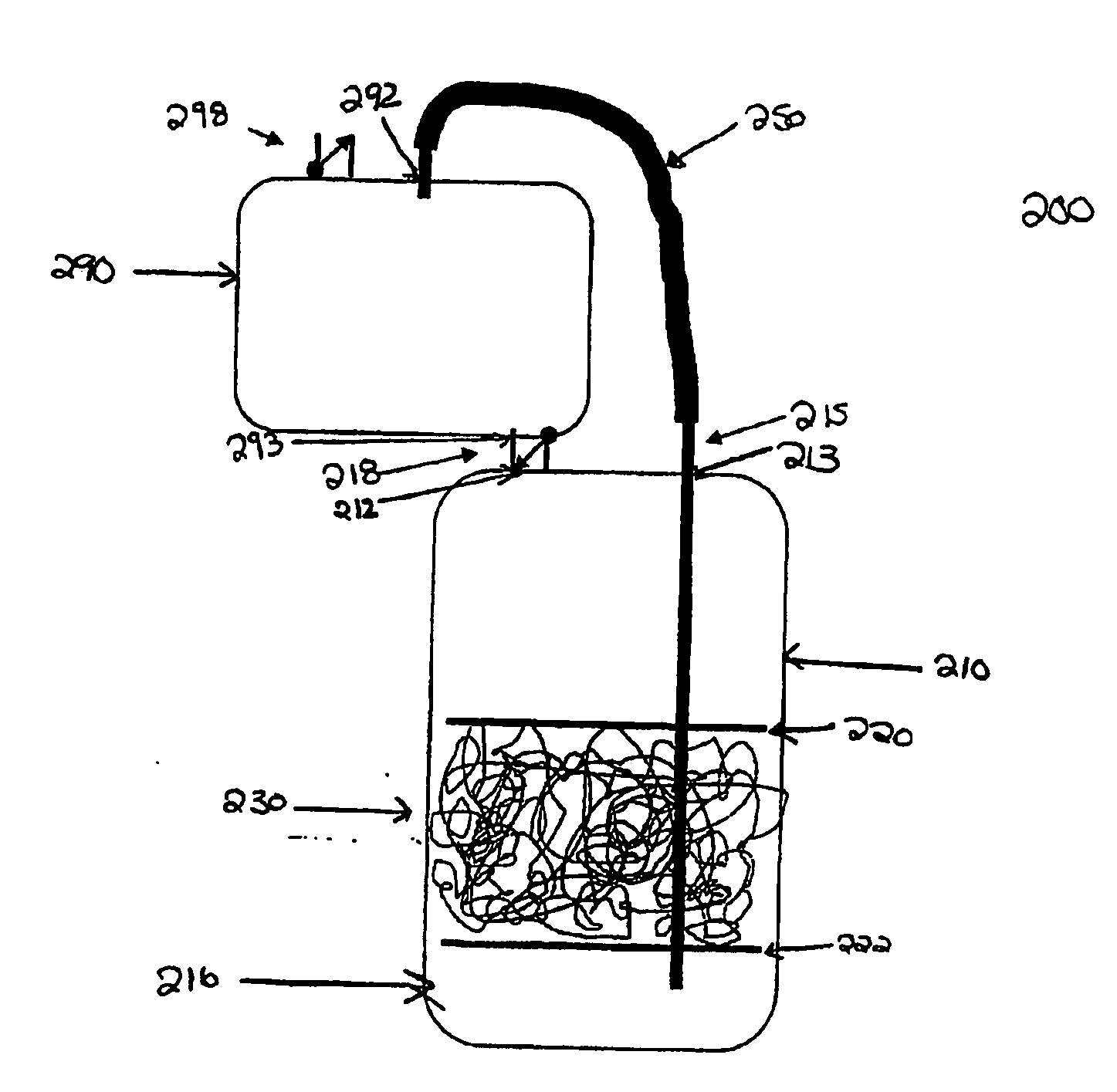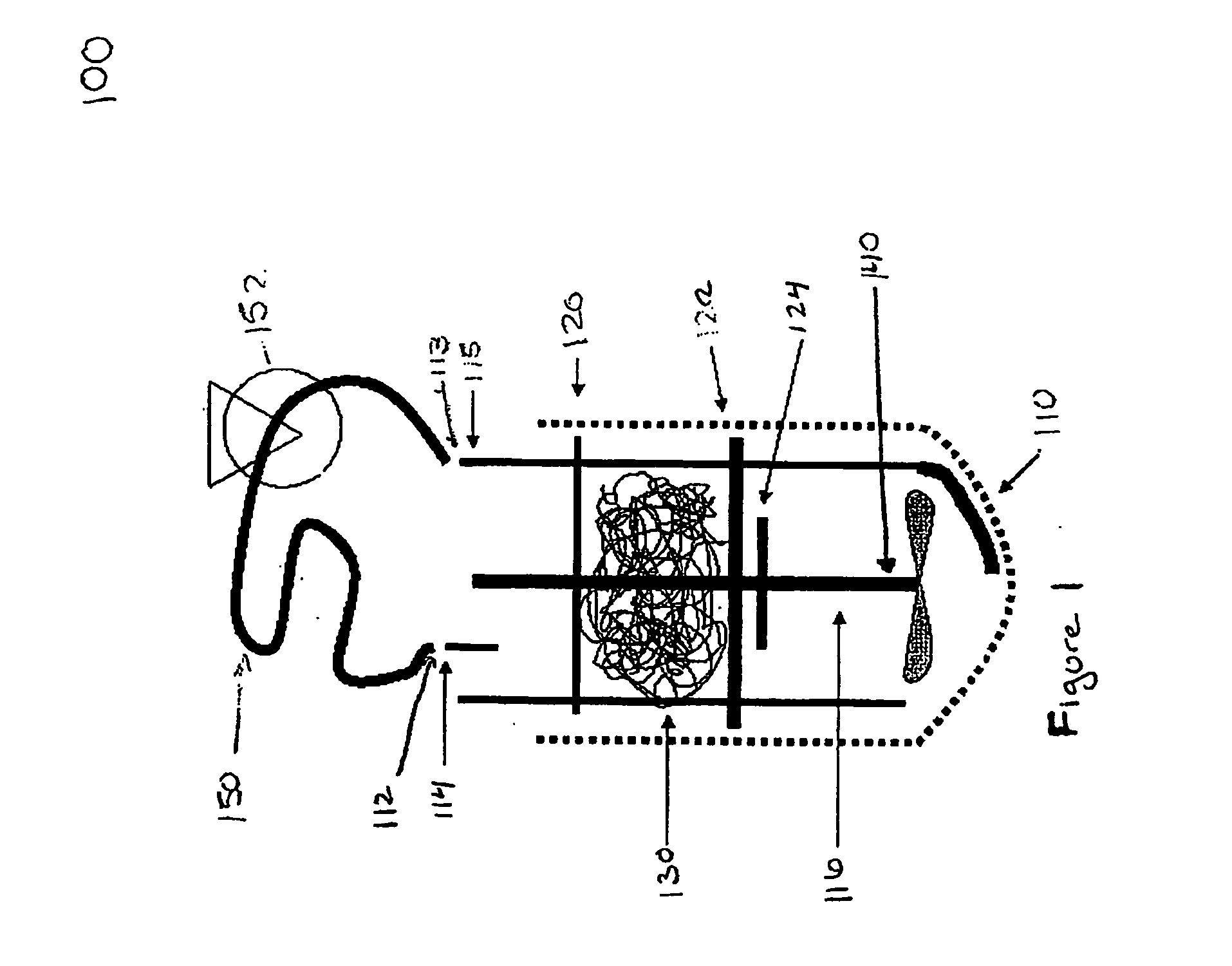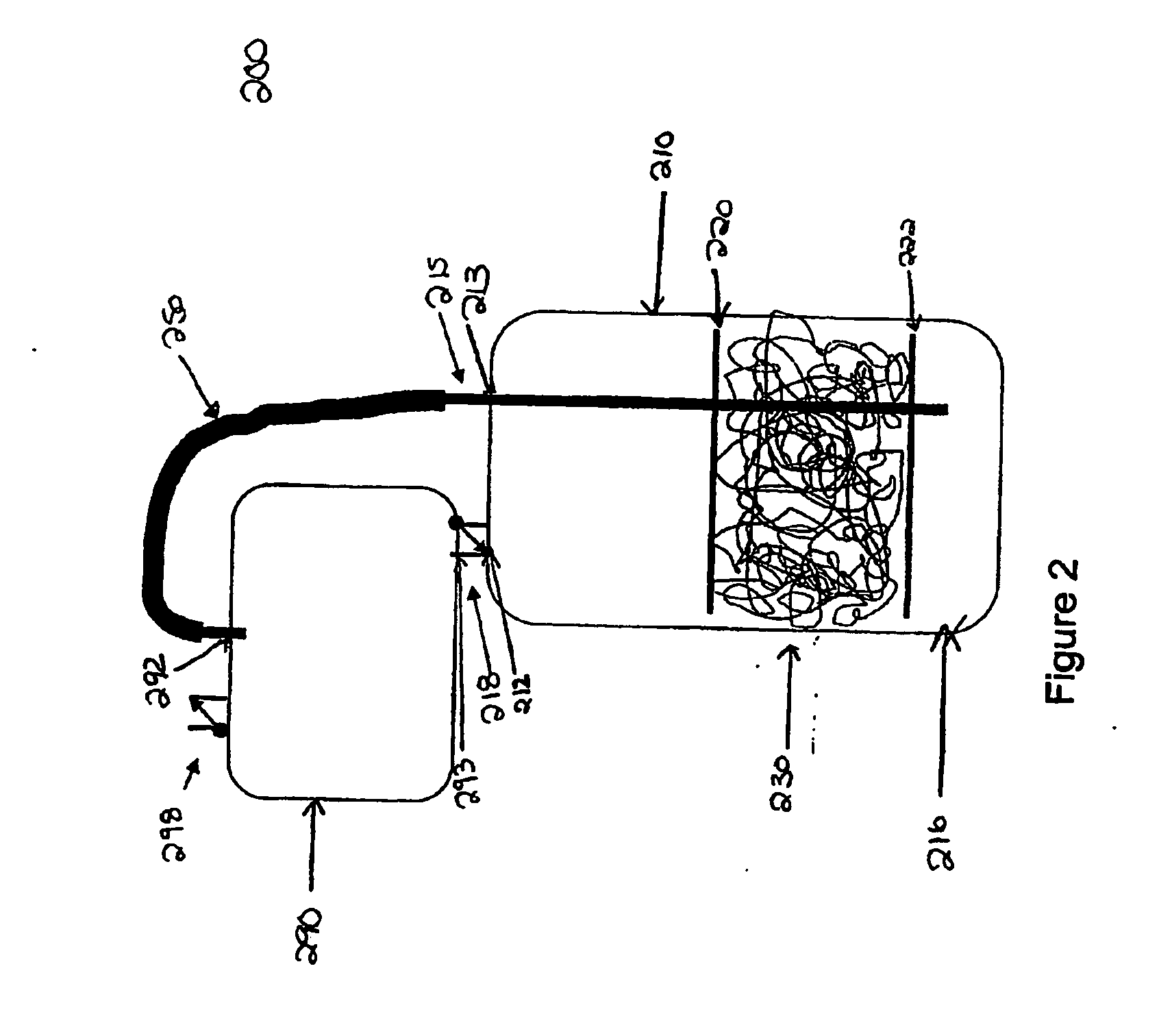Flow-Through Biological Conversion Of Lignocellulosic Biomass
a technology of biological conversion and lignocellulosic biomass, which is applied in the field of biological conversion of lignocellulosic biomass, can solve the problems of low-cost technology for overcoming the recalcitrance of these materials, cellulosic ethanol production presents a number of challenges, and the solids are removed from the production stream of cellulosic ethanol, so as to achieve cost savings
- Summary
- Abstract
- Description
- Claims
- Application Information
AI Technical Summary
Benefits of technology
Problems solved by technology
Method used
Image
Examples
examples
[0083]The following experiment was performed in an apparatus as shown in FIG. 1.
TABLE 1A Simultaneous Saccarification Fermentation (SSF) process1Add to reactor vessel:664 ml H2O5 g activated carbon1 ml resazurin30 ml NH4OH2Suspend in reactor vessel:175 g MS028 (pretreated hardwood substrate)3Autoclave reactor vessel for 40 min4Add to reactor vessel:180 ml of filter-sterilized concentrated bacterial growth medium5Purge with filter N2 for 1 hour6Set temperature @ 55° C., stirring @ 150 rpm7Add:27 ml Spezyme CP (cellulase- breaks down oligosaccharides)8Inoculate and ferment, temp 55, pH 5.5, rpm 150
[0084]The experiment showed proof of concept that ethanol can be produced from biomass in accordance with the process of the invention.
PUM
| Property | Measurement | Unit |
|---|---|---|
| length | aaaaa | aaaaa |
| temperature | aaaaa | aaaaa |
| temperature | aaaaa | aaaaa |
Abstract
Description
Claims
Application Information
 Login to View More
Login to View More - R&D
- Intellectual Property
- Life Sciences
- Materials
- Tech Scout
- Unparalleled Data Quality
- Higher Quality Content
- 60% Fewer Hallucinations
Browse by: Latest US Patents, China's latest patents, Technical Efficacy Thesaurus, Application Domain, Technology Topic, Popular Technical Reports.
© 2025 PatSnap. All rights reserved.Legal|Privacy policy|Modern Slavery Act Transparency Statement|Sitemap|About US| Contact US: help@patsnap.com



